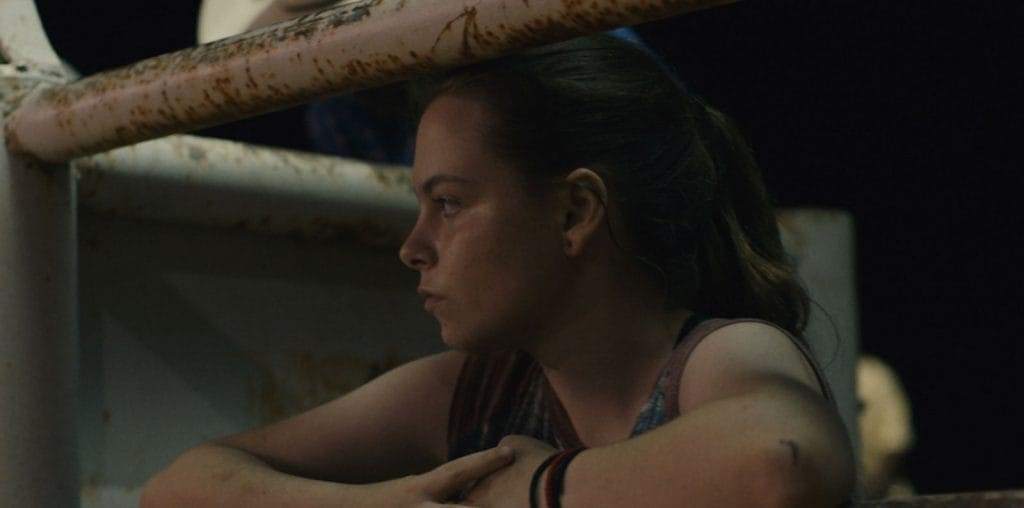
Once again, Camp Motion Pictures brings us the very best in crap we couldn’t get enough of back in the eighties, jammed to the gills with cheesy special effects, gallons of fake blood, gratuitous nudity, soundtracks courtesy of Casio, and of course, more pointless violence than you can shake a Swatch at. Featuring two movies on one DVD, no less: “Video Violence” and “Video Violence Part Two: The Exploitation.”
“Video Violence” starts off with a new video store in a town full of wackjobs and lunatics. Inadvertently, someone brings back a homemade video of the local postmaster being brutally killed. This, of course, sets off a chain of events that can only end in death, destruction, and of course, bloodshed.
“Video Violence 2” follows up by expanding the home video murder racket through the use of pirated cable. With a host of mailed-in violent fare from lunatic fans and a guest actress unaware of her imminent fate, the cable station promises a full lineup of death, destruction, and of course, bloodshed.
Both of which get the distinction of being at least somewhat original–I can’t place similar plotlines to any other film. A town full of crazies making their own snuff films and later expanding to basic cable? I sure can’t match it. Even though the sequel is little more than a ripoff of the first, it’s still not exactly frequently traveled ground.
There is, of course, another reason to watch and even appreciate the bumbling, stumbling attempts at horror we made back then–it’s the origination of the entire direct-to-video / indie horror movement. And you do have to admit that Camp Motion Pictures succeeds wholeheartedly in showing us exactly, unequivocally, where we came from. Trying to apply today’s standards to the “Video Violence” series gives us only unnecessary headaches–by today’s standards, either film is cheesy, shoddily done, and absolutely irredeemable. As a tribute to, or as an example of, eighties fare, then there’s nothing to say for it but it’s an unqualified success.
It even shows what video stores were like back in the days before Netflix was even possible, down to authentic posters in the windows (“Gung Ho” and “Down and Out in Beverly Hills” for example) and promotions for a wide array of video-related services (VCR sales and service? Try and buy a DVD player at Blockbuster today and listen to how hard they laugh at you!).
There’s even some jabs at our modern-era foibles in entertainment–one exchange features a young mother about to rent the film “Blood Cult” when she asks about the film’s rating. Upon discovering that it’s rated R, she further asks if there is any nudity in the film. Upon discovering that the MPAA slapped that R on there for violence, bloodlust and mass dismemberment, she says with some relief, “Oh, okay… the kids can watch it.” Even back then, we’d let our kids watch any bloodsport that crosses our screens, but let a nipple slip free and it was time to police the airwaves.
I don’t even know what to make of the second one, as unnerving commercial parodies intersperse with jokes straight off of a Garbage Pail Kids card collection in a whole that can only be called tasteless. Unless you include the word “baffling,” because that one qualifies too.
With some authenticity behind it, and originality to boot, failures like the total lack of good special effects work, exploitative and sadistic story material, and shoddy fight scenes can be somewhat tolerated. The simple fact is, in some ways, the “Video Violence” series gives us a lot of insight. And yet, it’s also pretty lousy.
If you’re hoping for a history lesson, then by all means, go grab a copy of the “Video Violence” series. If not, let this exploitative trashfest sit untouched on the shelves.

